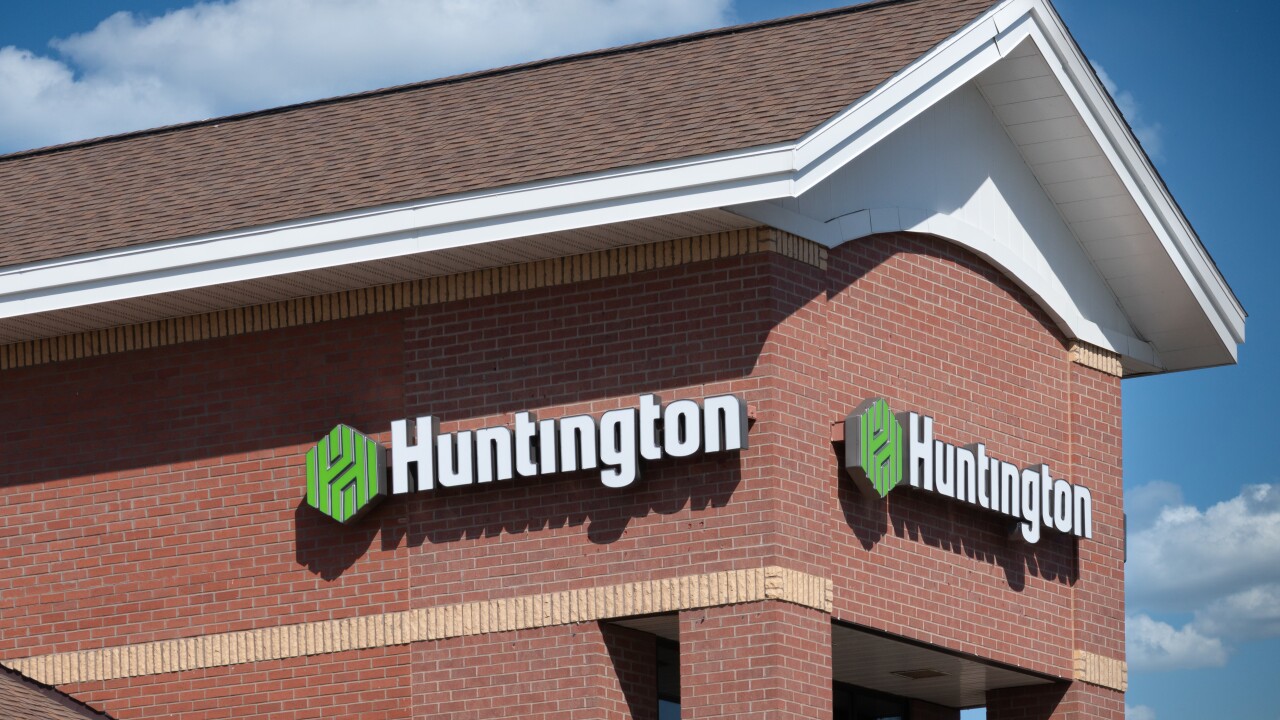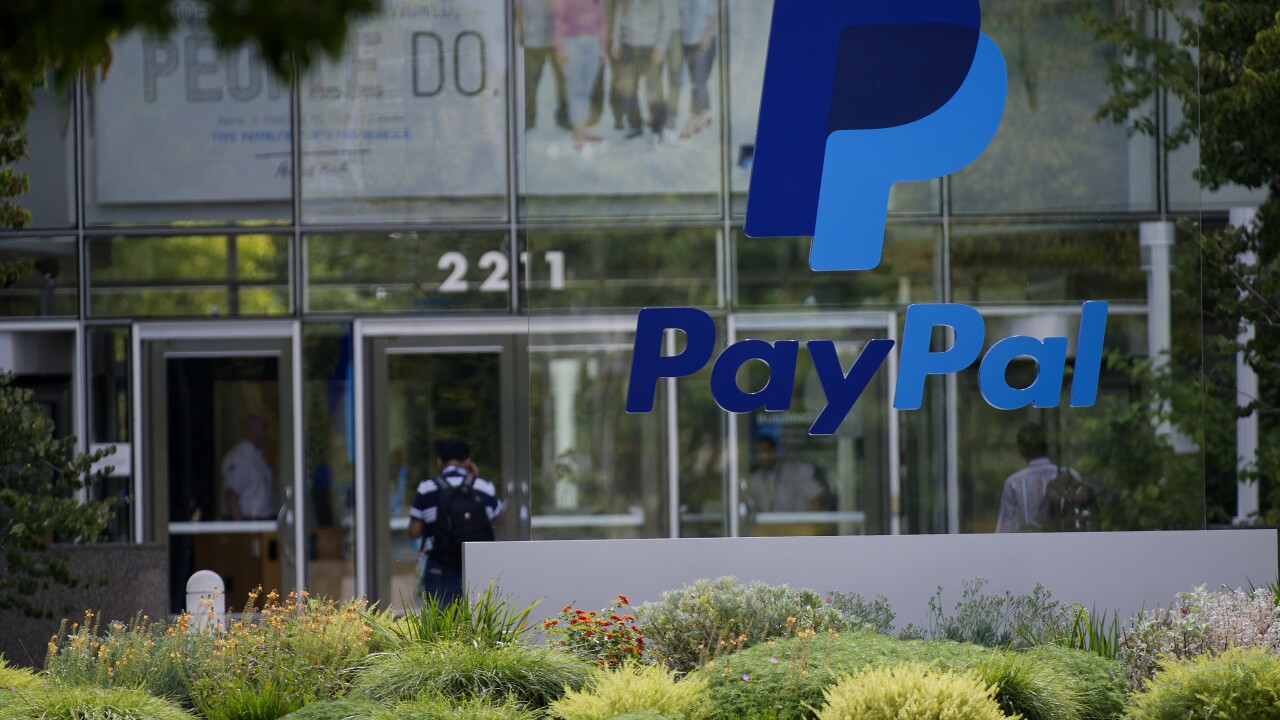The extent of realignment among the commercial banking elite became palpable last year in an unprecedented consolidation of automated clearing house payments.
American Banker's annual survey of paperless debit and credit originations-a window on wholesale activities that have been ahead of other banking businesses in economies of scale and market concentration-indicated that five companies were responsible for 40% of the transactions.
The five-firm concentration rose from 38.6% in 1996 and 37.7% in 1995. The companies flexing those muscles are the same ones that have been making waves on the merger scene or busily rooting out the cost benefits of past combinations.
After the perennial champion Chase Manhattan Corp., which doubled its ACH growth rate and thus widened its lead in 1997, the next four in consolidated volumes were quintessential superregionals: Norwest Corp., Banc One Corp., First Union Corp., and NationsBank Corp.
Year in and year out, these and a few others vie for, and often succeed at winning, corporate services business that historically went to money- center institutions. It is well recognized how these companies bulked up in recent mergers, but asset or deposit size is only a rough measure of their ability to play where the wholesale stakes are highest.
Automated clearing house originations provide a more refined view, and the big mergers' effects are clear.
The 1996 merger of Chase with Chemical Banking Corp.-the old Chemical was the acquirer but was second-tier in the ACH-was motivated by a desire to exploit the advantages of scale throughout the enterprise, top managers said. The new Chase saw a spurt in ACH volume of 43% over two years. (That is adjusted for the merger, with Chemical and Chase treated as one in 1995. Unadjusted, Chase's 429.9 million items in 1997 were up 88%.)
Whereas the old Chase alone had 9.99% of the market in 1995, the new, No. 1-ranked U.S. bank holding company claimed 14.28% of private-sector originations in 1997, as counted by the National Automated Clearing House Association. That rose from 13.26% in 1996, and Chase's share of total U.S. bank assets is still well below 10%.
The Chemical deal brought a "strong middle-market, public-sector, and small-business franchise," said Marcie Haitema, vice president and division executive at Chase's ACH operation in Tampa.
That was one of several reasons behind Chase's 27% increase in originated payments, 10 points better than 1997's industry norm. Ms. Haitema also cited "tremendous growth" in direct payroll deposits. That pushed Chase well past Norwest in ACH credits-they were about even in 1996- matching its long-held No. 1 rank in automatic debits.
"Without revealing our cost structure, I can tell you that it has grown at a tiny rate compared to transactions over the past five years," Ms. Haitema said. "That makes the people I report to very happy, and it gives us a competitive edge."
A capacity to attract additional volume at a low marginal cost characterizes all of the leaders. Eight holding companies, two more than last year, registered consolidated payments in excess of 100 million items.
First Union Corp. made a notable surge into fourth place from eighth by growing 86%, to 146.3 million ACH initiations. Counting the 55.7 million of pending merger partner CoreStates Financial Corp., as does the American Banker ranking accompanying this article, First Union vaulted past the 200 million threshold and was less than half a million behind No. 3 Banc One.
First Union had its sights on the top five, said corporate treasury executive Lee Madden. It got there as "a customer win from late 1996 had its full impact, and we worked hard on quality," he said.
First Union ranked third in ACH credit items, behind Chase and Norwest. It edged past Norwest with CoreStates' volume consolidated. Though much smaller than its acquirer, Philadelphia-based CoreStates has a customer list and international presence that strengthens First Union's commercial banking and payments credentials.
Separated out from their holding companies, six banks, up from three last year, surpassed the 100 million mark. Only Chase Manhattan Bank and Norwest Bank Minnesota were better than 200 million. But given the trend toward consolidation of ACH operations within holding companies, and the fact that these larger organizations have come to the fore as marketing entities, the American Banker ACH survey focuses for the first time on consolidated totals, including those of combinations pending at yearend 1997, such as First Union-CoreStates.
As recently as 1993 and 1994, the top five holding companies together accounted for one-third of the interbank ACH debits and credits originated in the private sector. In each of those years, the private-sector total was under two billion.
Then as now, the best-known uses of the system were automatic payrolls and direct government benefit deposits like Social Security, which are classified as credit items. Direct, recurring deductions from payers' accounts, such as the insurance premium payments pioneered by Chase that accounted for much of its record-setting 1997 volume of 429.9 million, are classified as debits.
The government entries, which do not count as private-sector originations, grew 8.5% last year, to 678 million, said the National Automated Clearing House Association.
Depository institutions' originations in 1997 rose about 17%, to 3.01 billion items, Nacha said. They passed three billion two years after surpassing two billion.
Including 861 million "on-us" items-those that are both originated and received within the same financial institution-the private-sector volume rose 17.2%, to 3.87 billion.
The commercial plus government grand total was up 15.8%, to 4.55 billion.
Annual ACH growth has been around 17% for four years. That constitutes a growth market by any conventional measure, but expectations have been greater. Optimists are still anticipating an explosion, possibly fueled by the federal mandate that virtually all government payments be made electronically next year, and by commerce on the Internet.
The companies that have built scale in the ACH business, and in payment and cash management services generally, have been able to grow at least as fast as the market.
NationsBank Corp. came in right at 17%, but it fell one place, to No. 5, because of North Carolina-based archrival First Union's jump to No. 4. Barnett Banks Inc. of Florida, which Nations acquired in January, generated a marginal percentage of the transactions. Boatmen's Bancshares of St. Louis, a 1997 acquisition and a top-20 ACH player, was a much bigger contributor to NationsBank's scale.
Northern Trust Corp. of Chicago, asserting its corporate banking and trust credentials, boosted credits by 41% and its total by 37%, to 118.4 million, to hold seventh place. Fleet Financial Group of Boston, a product of megamergers in recent years, rose 28% and three places among holding companies, to No. 9.
Citicorp of New York, which puts a majority of its volume through a corporate banking unit in Delaware, posted one of its best growth rates in years-19%, to 70.6 million-and rose three places, to No. 11.
Wells Fargo & Co., which suffered a 14% decline in 1996 that reflected business lost in its merger with First Interstate Bancorp, slowed the runoff to 5% in 1997. At 67.4 million total items, it was just behind Citicorp at No. 12; in 1995 Wells was No. 6.
Banc One Corp., one of the first to gain elite ACH status through acquisition-its lead originator, Bank One Illinois, has been second or third in debits ever since its days as the relatively obscure Marine Bank of Springfield-grew only 9% last year. But behind the scenes, the holding company is taking advantage of its geographical reach and converting as many items as it can to on-us status.
Like other superregionals whose corporate clients are completing more and more electronic transactions with the same banks' retail customers, Banc One cuts costs by keeping the exchanges "within the family." J.P. McClernon, national ACH operations manager, said that with on-us included, Banc One was up 25% last year.
Norwest, which grew a respectable if below-average 13% in interbank items, has also been emphasizing on-us, and is poised for new forms of growth. The bank has been active in check truncation pilots, in which checks are converted to ACH debits at the point of sale, and senior product manager Keith Theisen has been spearheading an industry project to handle redeposits of returned checks paperlessly.
Such applications could double or triple ACH volume, he said, and Norwest has built its capacity up to two million transactions an hour to set itself apart from older systems. "The technology and the rules are catching up to the opportunities," he said.
"We have an opportunity to expand and build on the ACH in ways not even contemplated today," said Mr. Theisen's boss, senior vice president Scott Peterson. "Given the Internet and the use of personal computers to initiate payments, we will see more and more creative uses of the ACH."
One of those uses-settlement of credit card and automated teller machine network transactions-put First National Bank of Omaha, EFS National Bank of Memphis, and First Premier Bank of South Dakota in the top 50. Add to those American Security Bank of Ville Platte, La. Its holding company became No. 50 after acquiring a Georgia bank's division that services ATM networks.





